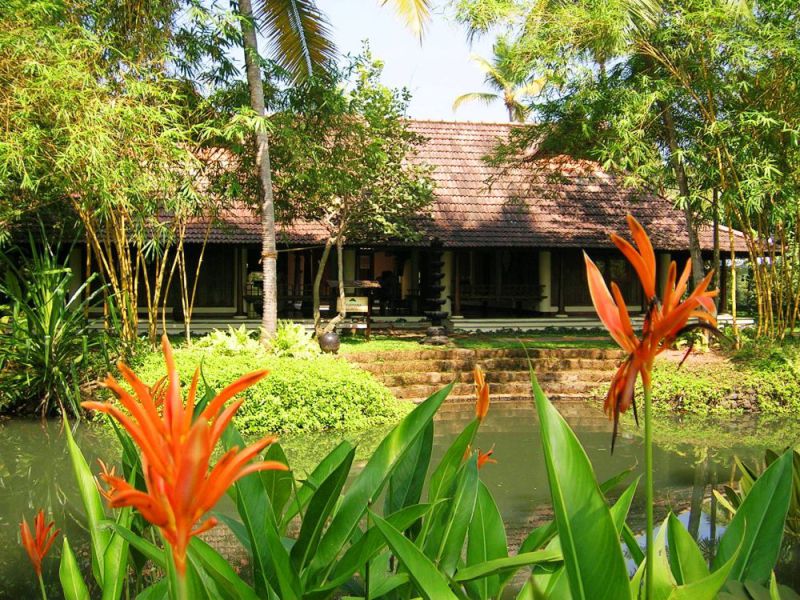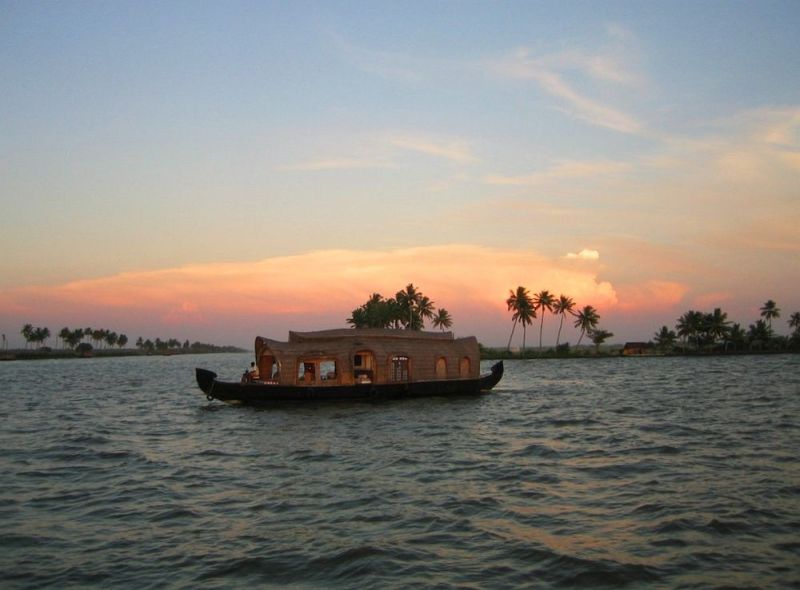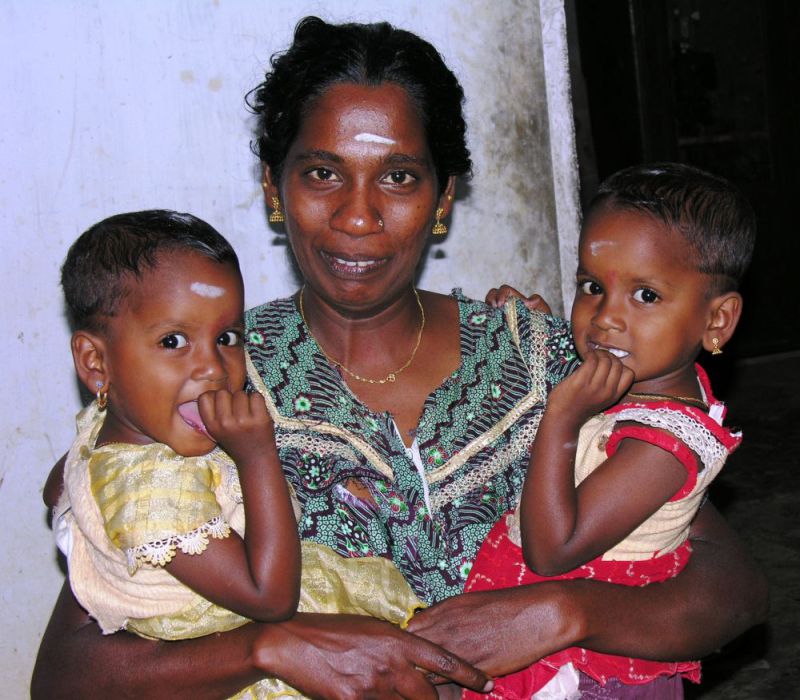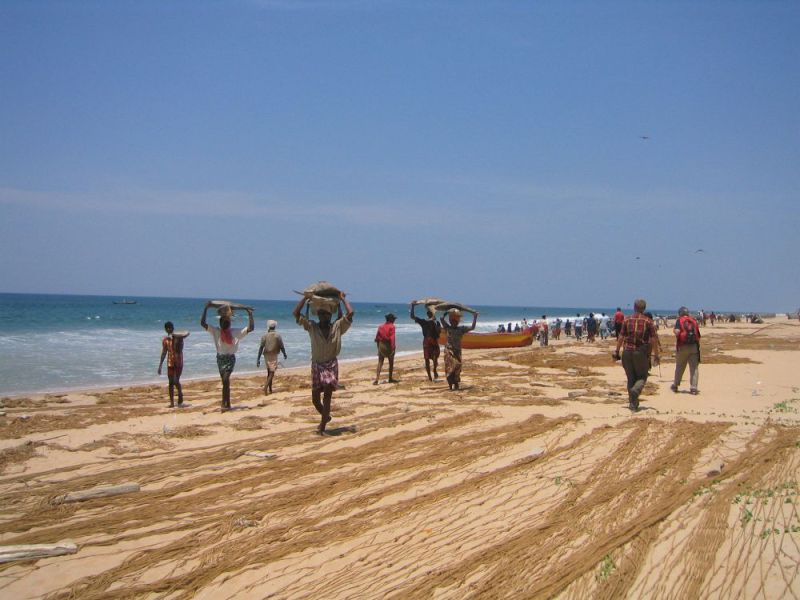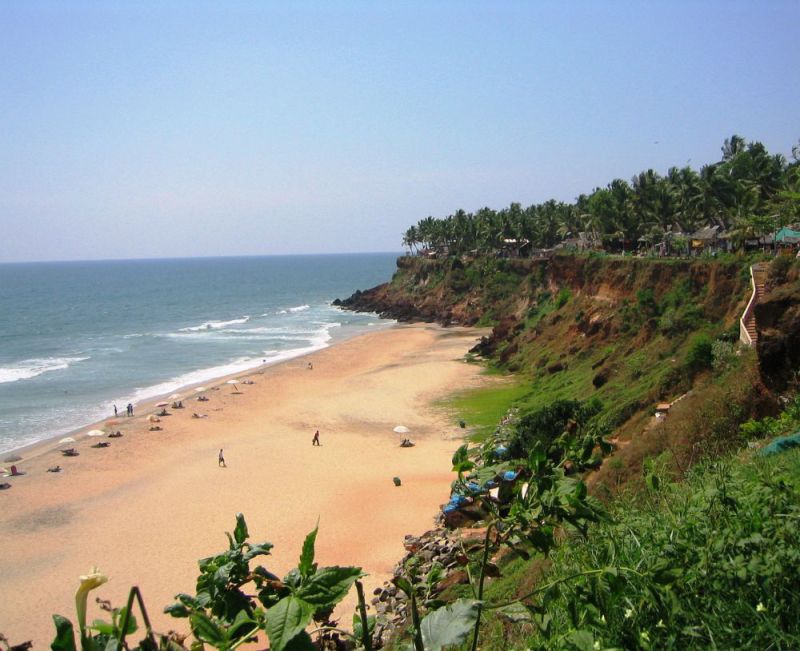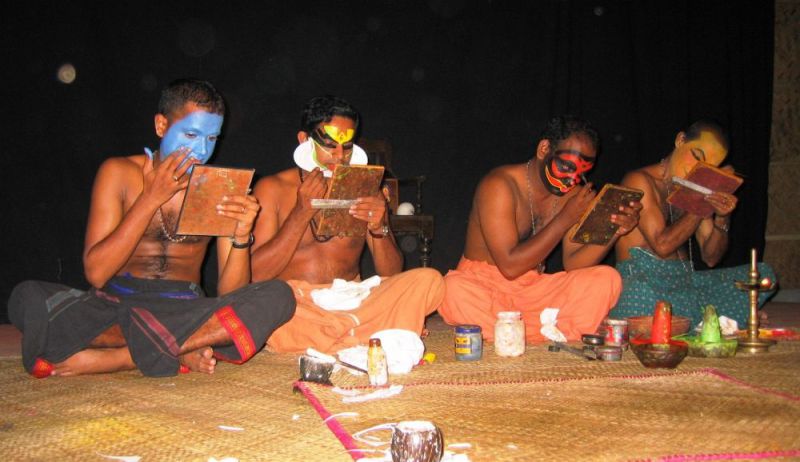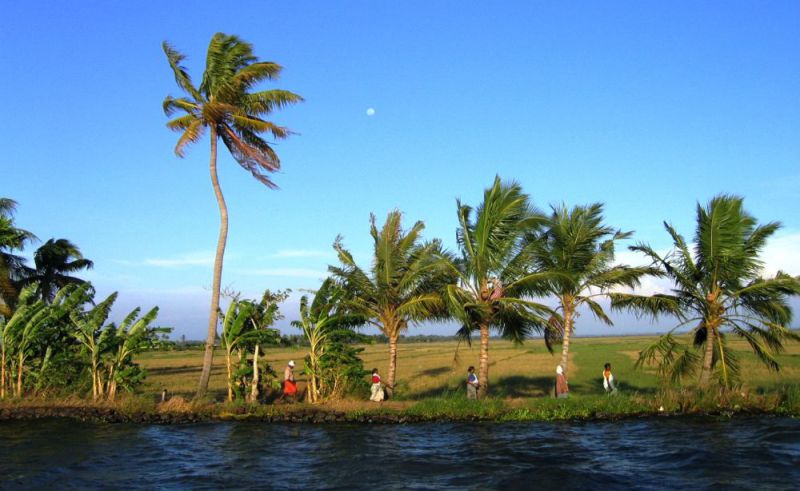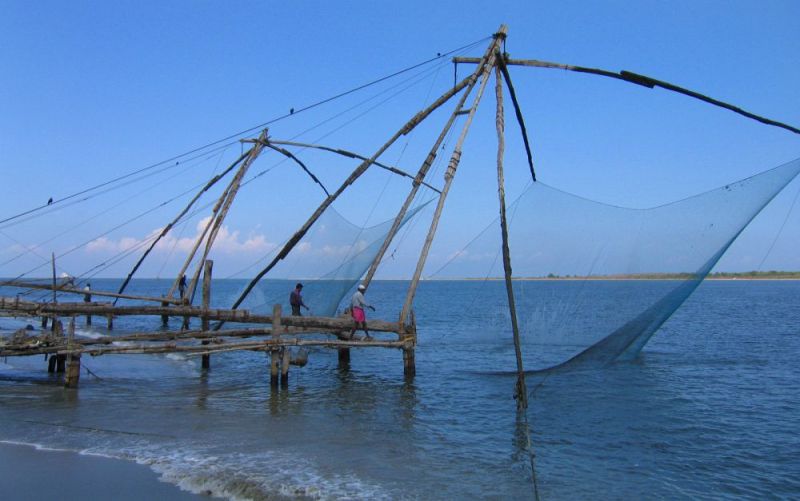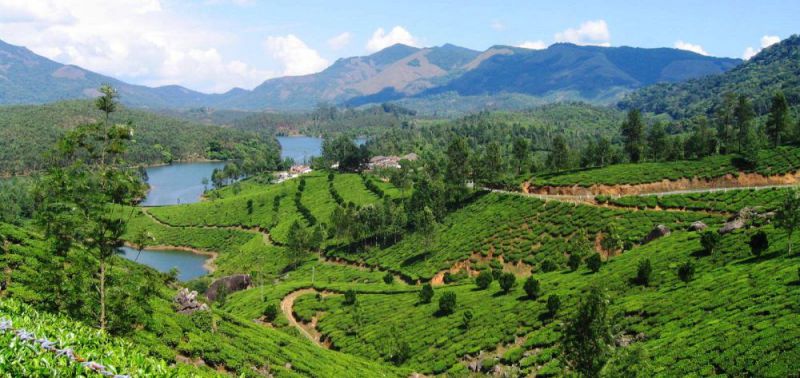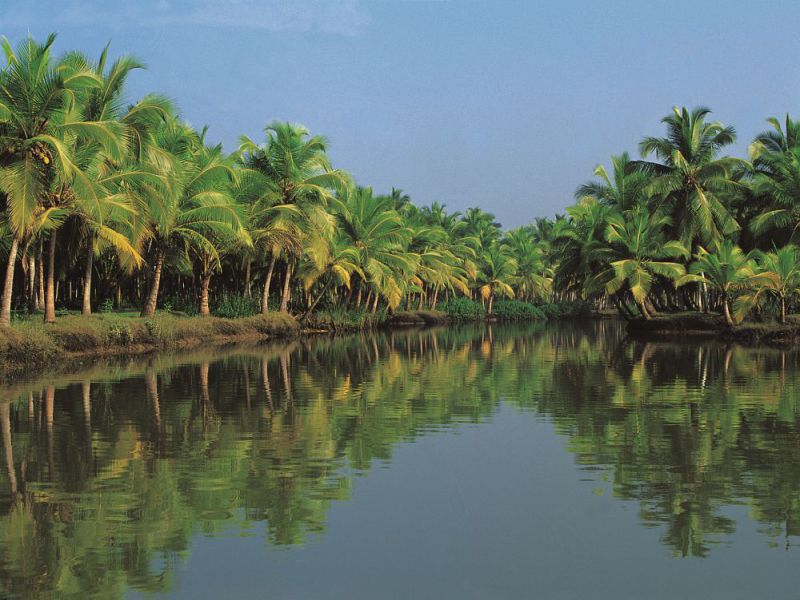Kerala, known as the “Tropical Garden of India,” offers a captivating landscape of emerald green, water-rich terrain, and picturesque surroundings. From its serene backwaters and exotic spice gardens to the charming mountain scenery dotted with sprawling tea estates, Kerala presents a paradise for nature lovers. Add to this the vibrant culture, friendly locals, and colorful traditions, and it’s clear why Kerala remains one of India’s most enchanting destinations. Located in the southernmost part of India, Kerala offers a vibrant mosaic of landscapes and experiences. The region is home to lush tropical forests, extensive plantations, wide sandy beaches, and ancient cultural practices embedded in a rich heritage. Unlike northern India, Kerala’s remote location helped protect it from invasions over the centuries. This has allowed its Hindu traditions, magnificent temples, and artistic architecture to thrive.
Kerala’s temples are a testament to its religious and artistic heritage, featuring exceptional temple architecture and cultural monuments. The temple dance Kathakali—one of the world’s oldest art forms—remains a central part of Kerala’s festivals and rituals. This mesmerizing performance combines music, dance, drama, literature, and even painting, offering a captivating cultural experience that should not be missed during your visit.
One of Kerala’s most famous attractions is its backwaters, a vast, natural canal system that links lakes, rivers, and other water bodies. The backwaters can be explored in traditional houseboats called Kettuvallams, or by canoe, providing a tranquil and scenic way to experience daily life in Kerala. As you glide through the waterways, you’ll witness colorful sari-clad women doing their laundry, schoolchildren traveling in their uniforms, and fishermen casting their nets.
The journey through Kerala’s backwaters is an unforgettable experience, allowing you to see both nature and local life up close. You can enjoy a leisurely boat ride or opt for an overnight stay on the houseboats for a more immersive experience.
After your backwater adventure, Kerala’s renowned wellness resorts await, offering luxurious spa experiences rooted in Ayurveda. Ayurveda, an ancient Indian holistic healing system, focuses on balancing the mind, body, and spirit. Kerala is known for its Ayurvedic treatments, which range from individual wellness applications to Panchakarma detox treatments that can last several weeks.
In these serene surroundings, highly skilled therapists will help you unwind and rejuvenate, offering treatments that will leave you feeling refreshed and energized, far away from the hustle and bustle of everyday life.
For nature and wildlife enthusiasts, Kerala offers Thekkady, home to the famous Periyar Wildlife Sanctuary. Surrounded by the tropical rainforest, Thekkady’s diverse flora and fauna make it an ideal destination for wildlife viewing. The sanctuary is home to Bengal tigers, elephants, macaques, Nilgiri tahr, sambars, fish otters, and numerous exotic bird species. The region’s dedication to preserving its natural beauty ensures that visitors experience wildlife in its purest form.
For nature and wildlife enthusiasts, Kerala offers Thekkady, home to the famous Periyar Wildlife Sanctuary. Surrounded by the tropical rainforest, Thekkady’s diverse flora and fauna make it an ideal destination for wildlife viewing. The sanctuary is home to Bengal tigers, elephants, macaques, Nilgiri tahr, sambars, fish otters, and numerous exotic bird species. The region’s dedication to preserving its natural beauty ensures that visitors experience wildlife in its purest form.
Terralaya Travels offers customized travel packages that combine some of the most beautiful destinations in Kerala. Whether you wish to explore the backwaters, experience Ayurveda, or venture into the hills of Munnar, we will tailor your trip to suit your personal preferences. Our tours often feature private vehicles, with optional two-day boating holidays, and offer a mix of adventure and relaxation through cycling and hiking tours.
The best time to visit Kerala is from September to early April when the weather is pleasant, and the landscape is lush. The tropical climate means temperatures range between 25°C and 33°C throughout the year. The warmest months are April and May, when temperatures can rise to 28°C-34°C.
While Kerala’s weather is generally sunny during this period, rain can occur unexpectedly, especially during the monsoon season from June to August. However, even during monsoon, the weather remains mostly favorable, and the lush greenery becomes even more vibrant. The monsoon rains are often a welcome change, offering a cool respite and an opportunity to experience Kerala in its full, lush glory.
Swimming in the Sea
Kerala’s beaches are ideal for swimming from October to mid-May. However, from mid-May to late August, due to high waves and strong currents, swimming is generally not recommended. Instead, hotel swimming pools provide a safe and enjoyable alternative for those seeking to relax by the water.
Located on the southwest tip of India by the Arabian Sea, Kerala lies along the coast of Malabar, bordered by the states of Karnataka and Tamil Nadu.
| Area | : | 15,087 square miles (38,863 km2) |
| Population | : | 35’000’000 / 860 per km2 (2021). |
| Capital | : | Thiruvananthapuram. |
| Districts | : | 14 districts: Alappuzha, Ernakulam, Idukki, Kannur, Kasaragod, Kollam, Kottayam, Kozhikode, Malappuram, Palakkad, Pathanamthitta, Thiruvananthapuram, Thrissur, and Wayanad. |
| Topography | : | Kerala has a coastline of ~imately 367 miles (590 km), bordered by a flat strip of land, initially up to 75 miles (120 km) wide, crossed by inland waterways. To the east, the Western Ghats rise with an average altitude of 4,921 feet (1,500 meters) above sea level. The highest point is Anamudi, standing at 8,842 feet (2,695 meters) above sea level. |
| Vegetation | : | In the Western Ghats' mountainous regions, evergreen and semi-evergreen forests thrive, home to plants such as balsam trees, Canarium strictum, Dipterocarpaceae, Bombacaceae, Bischofia javanica, magnolias, bamboo, ferns, orchids, and lianas. The flat coastal strip is mainly used for agriculture, leaving little natural vegetation. Along the estuaries and the expansive system of backwaters, mangrove forests are present, with sandy beaches, coconut trees, low bushes, and grasslands. |
| Wildlife | : | Kerala’s original fauna is mainly preserved in the Periyar Conservation Area. The heavy agricultural use of the land (86%) limits wildlife elsewhere. In Periyar, you can find Bengal tigers, Indian leopards, elephants, sambars, gaurs, mongooses, fish otters, and several species of monkeys, along with around 320 species of birds, 45 reptiles, and almost 30 species of amphibians. There are also countless fish species and a wide variety of insects. |
| Climate | : | Tropical monsoon climate. |
| Temperatures | : | Temperatures remain fairly constant between 77°F and 91°F (25°C to 33°C), with peak temperatures reaching up to 93°F (34°C) in April and May. |
| Rainfall | : | The region receives 196.9 inches (5,000 mm) of rainfall annually in the mountainous areas, and 49.2 inches (1,250 mm) along the coast. The heaviest rainfall occurs during the monsoon season from June to October. |
| Languages | : | Malayalam (97%), Tamil (2%), along with Konkani; tribal languages such as Tulu and Koraga are spoken as well. English is commonly used in education and business. |
| Ethnicities | : | Malayali (97%), with less than 1% being indigenous peoples like the Koraga. |
| Religions | : | 56% Hindus, 24% Muslims, 20% Christians. |
| Economy | : | Kerala’s economy is primarily based on agriculture, fishing, and the processing industry. The chemical industry and IT sectors are relatively small. The service sector makes up 75% of the gross domestic product, with tourism being the fastest-growing sector. |
| Getting There | : | International airports: Kochi, Calicut, and Trivandrum. You can also arrive by domestic flights from Mumbai, Delhi, or other domestic airports. |
Kerala is home to a unique blend of religions, with a relatively even distribution. While Hindus make up the majority (over 56%), there is a notable Muslim population (24%) as well as a significant Christian presence (about 20%). This religious diversity stems from Kerala’s long-standing trade relations with Arabs, followed by colonial influences from the Portuguese and Dutch in later centuries.
Despite the varying religious beliefs, these three major faiths have coexisted peacefully for centuries in Kerala, offering a harmonious example of cultural integration. The ethnic makeup of Kerala is quite homogeneous, with most people being descendants of early South Indian principalities. Around 97% of the population speaks Malayalam, the historical dialect of the region, which helps preserve the unity of origin among the people.
In the northern part of Kerala, indigenous tribes still speak languages such as Tulu, Konkani, and Koraga. The people of Kerala are known for their friendly and welcoming nature. Their religious diversity brings vibrancy to the region, with cities coming alive during festivals, creating a colorful and festive atmosphere. Hindu, Muslim, and Christian holidays are celebrated with equal fervor, enriching the cultural landscape of Kerala.
Kerala's fertile land has allowed for the cultivation of a variety of fruits, vegetables, and seafood, which have had a profound impact on the region's cuisine. The early trade with Arab countries enriched Kerala's culinary traditions, and European colonial influences further expanded the variety of dishes.
Kerala’s cuisine is distinctly Indian, with rice and curry being staples in daily meals. However, one of the unique features of Kerala's food culture is the frequent use of meat and dairy products, a reflection of the region’s Arab and European influences, as well as the significant Christian population.
When visiting Kerala, be mindful of the food’s spiciness and avoid consuming uncooked or unpeeled fruits and vegetables. Kerala’s desserts, such as a dish made from rice cakes with coconut, cashew nuts, and raisins, might be sweeter than what is typically found in European cuisine, but the range of flavors makes it worth trying.
The original flora and fauna of Kerala have been largely preserved in the Periyar Wildlife Sanctuary, located in the Western Ghats. Although much of the land has been cleared for agricultural use (about 85%), the sanctuary remains a sanctuary for many species. Formerly widespread semi-evergreen rain forests have given way to plantations, but the biodiversity of the region remains impressive.
The coastal region is less densely populated with wildlife but offers a picturesque view with coconut trees lining the beaches. While wild mammals are sparse, the air is filled with the sounds of colorful birds and butterflies.
A must-see for any visitor to Kerala is the Periyar National Park, located near Thekkady. This 800-square-kilometer protected area is home to diverse flora and fauna, including the elusive Bengal Tiger and Indian Leopard. The park is known for its evergreen and semi-evergreen forests, which include a wide variety of trees, shrubs, orchids, and ferns.
While monkeys, particularly the endangered lion-tailed macaque, dominate the treetops, visitors are also likely to encounter elephants, gaurs, Nilgiri tahr, and other wildlife. Birdwatchers will delight in the sight of over 320 species of birds, including exotic hornbills, parrots, and woodpeckers.
Reptiles, including venomous snakes like the king cobra and Russell’s viper, can be spotted, as well as around 160 species of butterflies. The park is a haven for wildlife enthusiasts and offers a truly unique opportunity to witness Kerala’s natural beauty.
Kerala’s history can be traced back to around 400 AD, when it was populated by various tribal kingdoms such as the Mooshikas, Cheras, and Ays. The Cheras were the longest-reigning dynasty in the region, holding control until around 1102 AD.
In the centuries that followed, the Kingdom of Venad became the most influential power in Kerala, establishing strong trade ties with both Arab and European nations. The arrival of Vasco da Gama in 1498 marked the beginning of European colonization, with the Dutch taking control in 1662. In 1791, the region formed an alliance with the British, who maintained control until Indian independence in 1947.
Today, Kerala exists as a democratically governed state within its present borders, formed in 1956.
Agriculture is the primary livelihood in Kerala, with 85% of the land being used for farming. Key agricultural products include rice, coconuts, rubber, betel nuts, cashews, tea, coffee, cocoa, and spices. While agricultural exports contribute significantly to the state’s economy, only about a quarter of Kerala’s GDP comes from this sector. The service sector, especially tourism, generates the largest portion of economic returns and continues to show promising growth.
Tourism, driven by Kerala's natural beauty and rich cultural heritage, is a major economic force. The state has also developed a strong health and education system, making it one of the wealthier states in India.
In addition to the Hindu festivals that dominate Kerala’s cultural calendar, Muslim and Christian holidays are also widely celebrated. Kerala’s festivals follow the lunar calendar, which means their dates vary each year. As a result, it’s worth checking the timing of local festivals when planning your visit. Terralaya Travels will assist by checking the dates of festivals to ensure they fit into your itinerary, allowing you to experience the cultural celebrations that align with your travel plans. A highlight of Kerala's festival calendar is the Kathakali performance. This dance form, which combines acting, music, and traditional Indian dance, is the oldest and most distinctive in southern India. Attending a Kathakali festival is highly recommended during your trip to Kerala, and Terralaya Travels can assist in incorporating this cultural experience into your itinerary.
Onam
- When: August – September
- Description: Kerala’s most celebrated festival, marking the homecoming of the mythical King Mahabali. It includes boat races, traditional dances, floral carpets, and a grand feast.
- Highlights: Traditional dances, boat races, grand feasts, Pookalam (flower decorations)
Vishu
- When: April
- Description: Marks the beginning of the new year in Kerala with "Vishukkani", fireworks, and family gatherings.
- Highlights: Vishukkani, fireworks, family gatherings
Thrissur Pooram
- When: April – May
- Description: Kerala’s grandest temple festival with decorated elephants, drum performances, and fireworks.
- Highlights: Elephants, drum performances, fireworks
Maha Shivaratri
- When: February – March
- Description: Dedicated to Lord Shiva, with night-long prayers, fasting, and chanting at temples.
- Highlights: Temple prayers, fasting, night vigils, chants
Christmas
- When: December 25th
- Description: Celebrated with midnight masses, feasts, decorations, and lights by Kerala’s Christian community.
- Highlights: Midnight mass, Christmas feasts, decorations, lights
Eid al-Fitr
- When: Varies (based on Islamic lunar calendar)
- Description: Celebrates the end of Ramadan with prayers, feasts, and acts of charity.
- Highlights: Mosque prayers, feasts, charity
Easter
- When: March – April
- Description: Commemorates the resurrection of Jesus Christ with church services and family celebrations.
- Highlights: Church services, Easter egg decorations, family gatherings
Karni Mata Festival (Karthika Vavu)
- When: November – December
- Description: Devotees of Karni Mata offer prayers and perform rituals for prosperity and well-being.
- Highlights: Temple visits, prayers, rituals
Navaratri / Dussehra
- When: September – October
- Description: A Hindu festival celebrating Goddess Durga with music, dance, and devotion, ending with Dussehra.
- Highlights: Dance performances, prayers, temple visits, processions
Attukal Pongala
- When: February – March
- Description: One of the world’s largest gatherings of women, who prepare Pongala for the goddess at Attukal Temple.
- Highlights: Women cooking offerings, temple processions, prayers
Kerala Piravi Day
- When: November 1st
- Description: Marks the formation of the state of Kerala in 1956, celebrated with pride and cultural events.
- Highlights: Cultural performances, exhibitions, government celebrations
Makar Sankranti
- When: January 14th
- Description: A harvest festival celebrated with kite flying, bonfires, and traditional sweets.
- Highlights: Kite flying, bonfires, sweets
 ENG
ENG
 DE
DE

